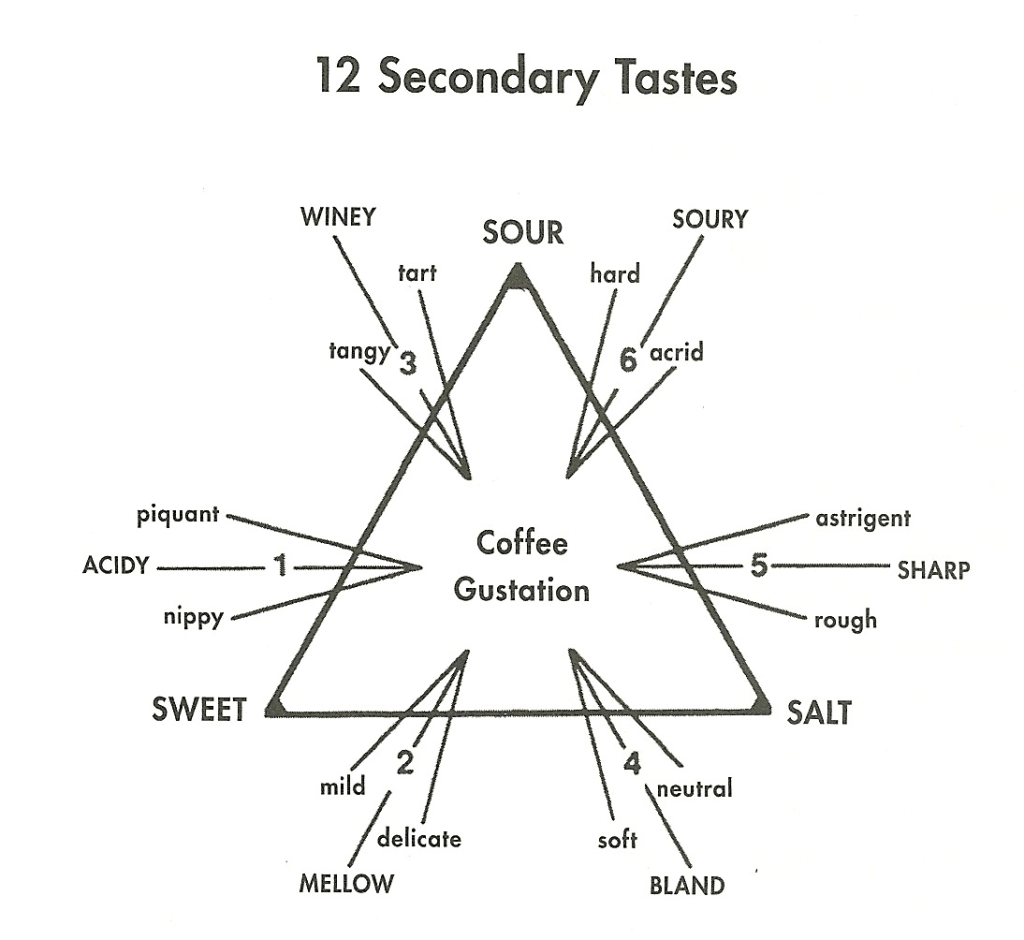After identifying the primary taste sensation, one can further specify the character of the coffee brew by determining the degree to which the taste sensation fits into the primary category. To do this, one selects the appropriate secondary taste term that describes the direction of the taste sensation.
For example, a winey taste that tends toward sweet could be referred to as tangy, while a winey taste that tends toward sour could be referred to as tart. Use the following chart and table to see the relationship between primary terms and the secondary terms.

| Primary Term | Variation | Secondary Term |
| Acidy | Toward Sweet | Nippy |
| Toward Sour | Piquant | |
| Mellow | Toward Sweet | Mild |
| Toward Salty | Delicate | |
| Winey | Toward Sweet | Tangy |
| Toward Sour | Tart | |
| Bland | Toward Sweet | Soft |
| Toward Salty | Neutral | |
| Sharp | Toward Salty | Rough |
| Toward Sour | Astringent | |
| Soury | Toward Salty | Acrid |
| Toward Sour | Hard |
Intensity
The third and final step in evaluating gustation of coffee is to determine the intensity of the taste sensation, which ranges from perceptible to pronounced. This is usually best described by an adverb – highly, moderately or slightly.
